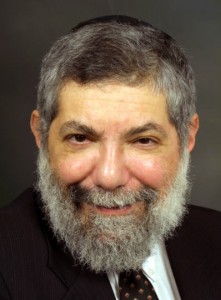Today I met with one of my friends in the Chicago area, Dr. Ross Abrams. Although Nate has been gone nearly eight months, my occasional conversations with his doctor have continued to be a blessing to me.
Dr. Abrams is a very busy guy, the number one man in radiation oncology at Rush University Medical Center, yet he graciously gave me a chunk of his day in an unhurried manner. This was a valuable gift.
We talked about how Nate fought with cancer but not against it, how he accepted his terminal diagnosis with remarkable calm. Dr. Abrams has watched every one of his pancreatic cancer patients die of this fatal disease, noting how some accept their “fate” early-on while others never do. We wondered aloud what happens within a person to make them ready to die, to be so sure of it they confidently refuse further treatment. He’s observed that a personal faith in God is usually present when someone peacefully accepts death’s imminence, saying, “I believe Nate was a man of strong faith.”
We also talked about our marriages and their great worth, mentioning the importance of this institution. We agreed that one of the keys to a long marriage is to determine up front that neither will look for an escape hatch when rough patches come but will work to resolve the problem. Sweet rewards await those who remain committed.
As Dr. Abrams put it, “Once we make any commitment, obligations quickly follow, but we learn there is great satisfaction in fulfilling our obligations to each other.” Amen to that.
He asked about our children, wondering how they were coping with losing their father, which led to a discussion of the differences between suffering and sadness. We decided suffering involved coping with continual pain or damage, enduring ongoing loss. Sadness, although just as real, is more about mood and is prone to improvement as emotional healing takes place. Dr. Abrams is an expert on both, having witnessed much of it in his patients and their families.
We talked of our grandchildren, his seven and my five, acknowledging the pleasure of this season, and he showed me a new family photo in which all 17 wore black and white. I called it “a treasure” because they were all there with no one missing. The last Nyman family photo didn’t include Micah, Thomas or Evelyn, yet unborn. Our next picture will include them but not Nate. Dr. Abrams nodded knowingly.
We continued our conversation, talking about trusting a God who sees our lives from beginning to end, all at once, desiring to bring good to each person. Because we as humans see only the past and the present, it’s difficult to trust there will be good in the future when “bad” (as in cancer) dominates the now. Dr. Abrams referenced an Old Testament verse and I quoted from the New Testament, but we agreed that this one God has said the same thing to both of us.
When it was time for the doctor to move back into his medical day, we left the office with a handshake and a promise to share another conversation down the road. Here’s a quote from the blog post he wrote for this site on April 19, 2010: “My internal definition of ‘being a doctor’ require(s) being regularly involved in caring for other human beings” (as opposed to lab work).
Today I was the recipient of some of that care and as a result have moved forward one more step in the healing process. Thank you, Dr. Abrams.
“Pure and genuine religion in the sight of God the Father means caring for orphans and widows in their distress and refusing to let the world corrupt you.” (James 1:27)



